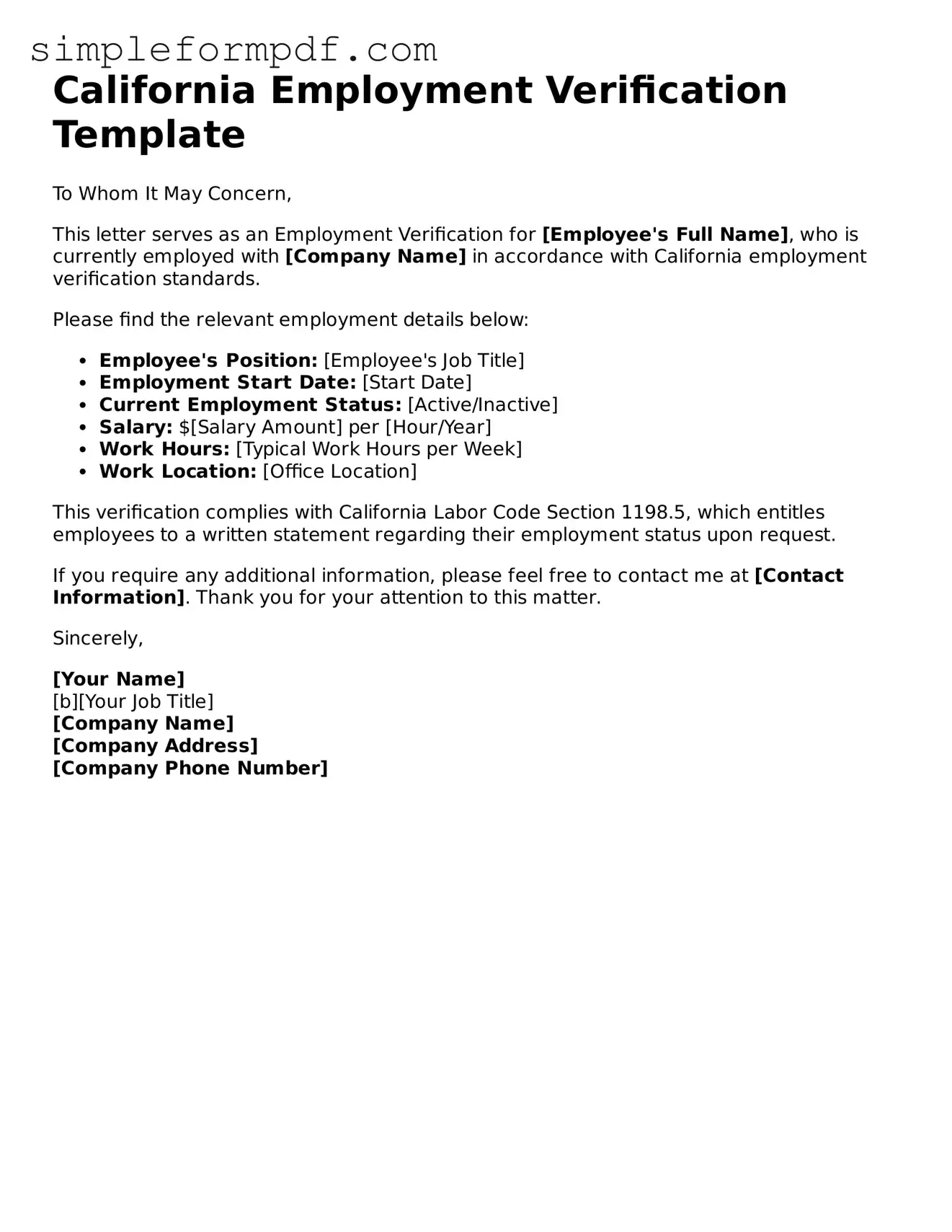California Employment Verification Template
To Whom It May Concern,
This letter serves as an Employment Verification for [Employee's Full Name], who is currently employed with [Company Name] in accordance with California employment verification standards.
Please find the relevant employment details below:
- Employee's Position: [Employee's Job Title]
- Employment Start Date: [Start Date]
- Current Employment Status: [Active/Inactive]
- Salary: $[Salary Amount] per [Hour/Year]
- Work Hours: [Typical Work Hours per Week]
- Work Location: [Office Location]
This verification complies with California Labor Code Section 1198.5, which entitles employees to a written statement regarding their employment status upon request.
If you require any additional information, please feel free to contact me at [Contact Information]. Thank you for your attention to this matter.
Sincerely,
[Your Name]
[b][Your Job Title]
[Company Name]
[Company Address]
[Company Phone Number]
